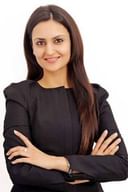Get the App
For Doctors
Login/Sign-up
Last Updated: Jan 10, 2023
BookMark
Report
Boils - How They Are Treated As Per Severity?
The skin is the largest organ in the human body and has various functions as listed below.
- Acts as a protective layer for the entire body.
- Has many oil and sebaceous glands, which secrete oil and sebum. These provide lubrication and protection for the skin against infections.
- The hair follicles also from which hair grows and covers the skin. This again is important for body temperature regulation.
- The sense organ for touch.
Skin boils are one of the most common infections and caused by bacteria. The hair follicles or oil glands can get infected and produce a boil. Symptoms include:
- A red painful lump usually not more than half an inch
- Redness and pain in the immediate surrounding area
- Swelling of adjacent lymph nodes
- General symptoms like fever and fatigue if there are multiple boils or are severely infected
- Though most commonly seen in the face, armpits, neck, and shoulders, they also can affect the eyes, and are then known as sty.
- Carbuncle is a condition where are there quite severe boils in multiple regions on the body. These will be definitely accompanied by fever, lymph node swelling, and other symptoms of infection.
Causes: While almost anybody is prone to develop boils, lowered immunity increases the chances of developing boils. Diabetes, poor nutrition, poor hygiene, and chemical and environmental pollutants increase the chances of developing boils.
Treatment: Most boils do not need treatment, but they should not be ignored in the following situations:
- Recurrent infections
- Accompanied by fever and swollen lymph nodes
- Severe pain with surrounding skin being extremely red and swollen and warm to the touch
- Poor hygiene and poor nutrition leading to multiple/recurrent boils.
Treatment: In the order of severity,
- Topical antibiotics can be applied to reduce the infection
- In cases of multiple/recurrent boils, a course of antibiotics can be used
- If the boil is draining pus, the liquid may be cultured to identify antibiotics
- The drained area is to be maintained clean and dry
- Washing with antibacterial soap and patting dry with gauze is recommended
- Soaking the boil in warm water also helps in quicker draining, this would depend on the area affected.
- It may need to be washed with antiseptic and bandaged
- Apply warm compresses by soaking a cloth in warm water and squeezing out the excess water. This can be applied to the skin so that pain is reduced and it drains on its own
- As people with poor hygiene and poor nutrition are prone for boils, it is important to improve these aspects, especially if you are prone for boils.
In case you have a concern or query you can always consult an expert & get answers to your questions!



+1.svg)
